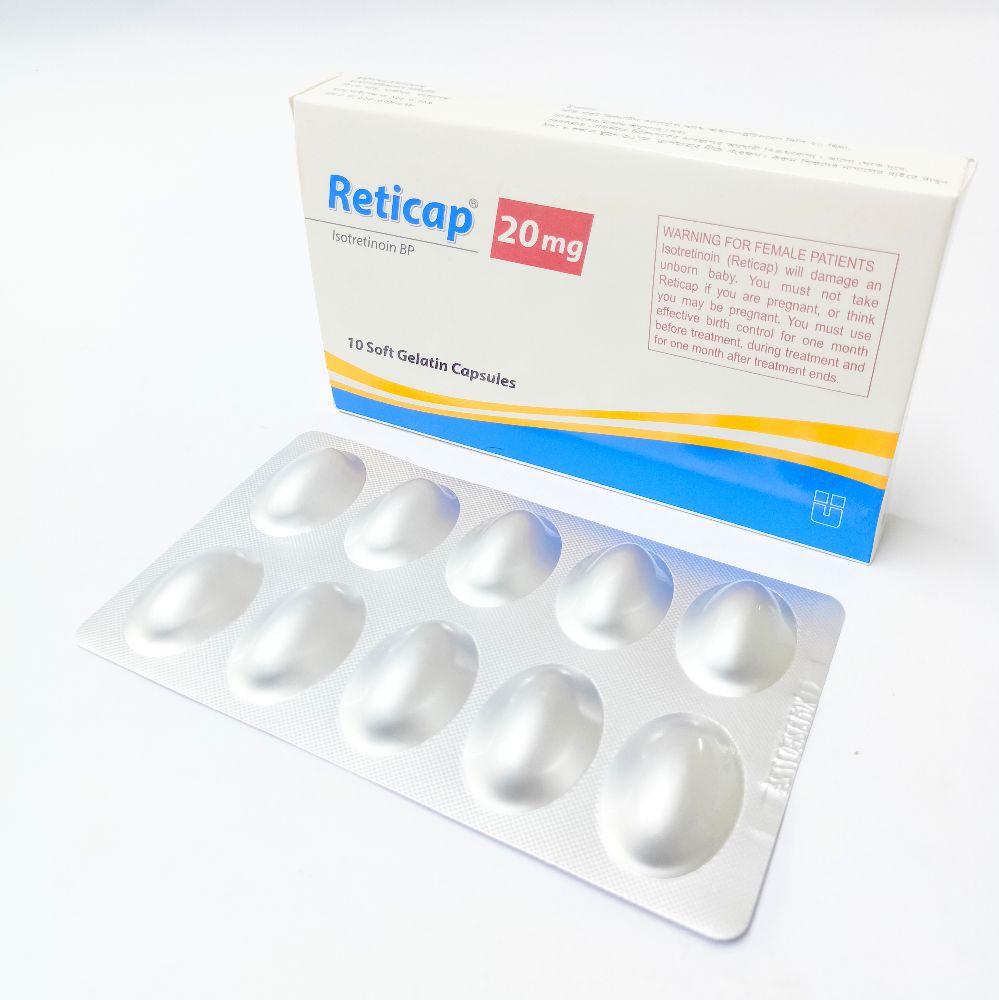
Type:10 Capsules
Generic Name:Isotretinoin
Manufacturer:Unimed Unihealth Pharmaceuticals Ltd.
Price:৳750.00
Acne
Should be taken with food.
Oral Severe, Recalcitrant Nodular Acne Severe nodular acne unresponsive to conventional therapy, including systemic antibiotics Adult: 0.5-1 mg/kg/day PO divided BID for 15-20 weeks Dose up to 2 mg/kg/day (as tolerated) if disease is very severe with scarring or is primarily manifested on the trunk Hepatic impairment: Contraindicated.
Severe, Recalcitrant Nodular Acne Severe nodular acne unresponsive to conventional therapy, including systemic antibiotics <12 years: Safety and efficacy not established >12 years: 0.5-1 mg/kg/day PO divided BID for 15-20 weeks Dose up to 2 mg/kg/day (as tolerated) if disease is very severe with scarring or is primarily manifested on the trunk
Renal impairment: Severe: Reduce initial dose (e.g. 10 mg daily), then gradually increase to 1 mg/kg as necessary.
Pregnancy, lactation.
Isotretinoin is a synthetic retinoid which reduces sebaceous gland size and sebum production. It also regulates cell proliferation and differentiation.
Preexisting or predisposition to hypertriglyceridaemia (e.g. DM, obesity or increased alcohol intake). Monitor triglyceride levels. Monitor blood lipids and LFTs at wkly or bi-wkly intervals. Monitor blood glucose in known or suspected DM patients. Genetic predisposition for age-related osteoporosis, history of childhood osteoporosis, osteomalacia or other bone metabolism disorders. Anorexia nervosa. History of psychiatric disorder. May impair night vision. Avoid wax epilation and skin resurfacing procedures for at least 6 mth. Avoid prolonged exposure to UV light or sunlight. Discontinue if hearing impairment, abdominal pain, rectal bleeding, severe diarrhoea or adverse ocular effects occur. Patient should not donate blood during therapy and for at least 1 mth following drug discontinuation. Lactation: Unknown whether distributed into breast milk; because of potential for serious adverse reactions in nursing infants, do not administer to women who are breastfeeding
>10% Cheilitis (90%),Xerosis,Xerostomia,Dry nose,Epistaxis,Pruritus,Conjunctivitis (including blepharoconjunctivitis) (40%),Irritation (40%),Increased erythrocyte sedimentation rates (40%),Thinning of hair (which has persisted in rare instances),Palmoplantar desquamation,Skin fragility,Skin infections (eg, paronychial infections),Rash (including erythema, seborrhea, eczema), photosensitivity,Hypertriglyceridemia (25%),Bone or joint pain,Generalized muscle aches,Arthralgia,Decreased HDLs (15%),Increased LFTs (15%),Increased CPK (12-24%),Decreased hemoglobin concentration and hematocrit,Decreased erythrocyte and leukocyte counts,Increased platelet count 1-10% Decreased bone mineral density (8.8%),Premature epiphyseal closure (3%) Frequency Not Defined Lethargy,Fatigue,Headache,Anorexia,Nausea,Vomiting,Increased appetite,Thirst Potentially Fatal: Anaphylaxis. Haemorrhagic pancreatitis.
Additive toxicity with vitamin A or its derivatives. Decreased efficacy of microdosed progesterone (use 2 forms of contraception). May increase risk of bone loss with phenytoin. May increase risk of osteoporosis with systemic corticosteroids. Reduces plasma levels of carbamazepine. Potentially Fatal: Increased risk of pseudotumor cerebri with tetracyclines.